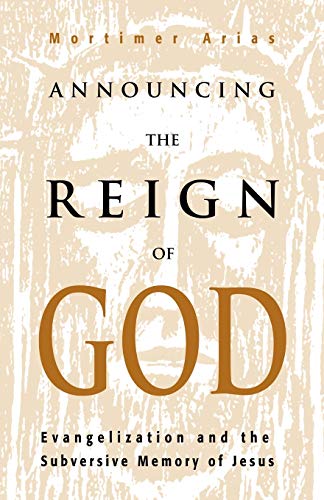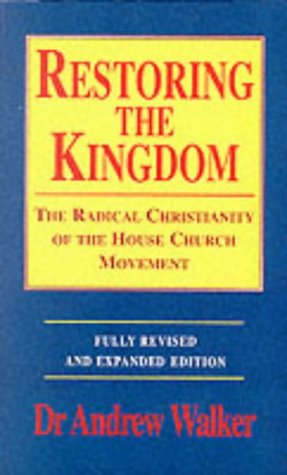God in Creation: an ecological doctrine of creation
Written by Jürgen Moltmann Reviewed By Laurence OsbornHere at last is Moltmann’s response to one of the outstanding problems facing contemporary systematic theology, namely the problem of creation. This is, in fact, a two-sided problem covering as it does both the relevance of theology to nature and the relevance of the material creation to our understanding of God. The problem has been exacerbated by two features of contemporary theology—its Christocentrism and its concordat with nineteenth-century science. In this work Moltmann adds his weight to the increasing number of calls for an expansion of the horizons of theology. Only by regaining its cosmic breadth can Christian theology make a positive response to the present crisis in man’s relationship with nature.
Moltmann has chosen to make this work part of his projected Messianic Theology. As such it is organically related to the social understanding of the Trinity developed in the first volume of this project: The Trinity and the Kingdom of God. This is shown clearly by the guiding principles laid out in his opening chapter. His starting-point is the assumption that knowledge of the world as creation must be participatory knowledge, i.e.holistic rather than analytic. This is because he understands life in terms of relationships on the model of the perichoretic life of the social trinity. The trinitarian approach further requires that creation itself be understood in trinitarian terms rather than in the monotheistic way of traditional theology. Because of past overemphasis on the Father’s role in creation, Moltmann chooses to emphasize the role of the Spirit. This is consistent with his stress on participation as it leads him to focus on God’s immanence in the world. However he also wants his doctrine of creation to be distinctively Christian in line with its location within a Messianic theology. To achieve this he emphasizes the divine purpose of creation and the corresponding movement of the world towards God’s eschatological goal.
Two more introductory chapters deal with the present ecological crisis (and the complicity of classical Christian theology) and the problem of the knowledge of nature as creation. Moltmann maintains the German dislike of natural theology: only revealed theology is possible in the history of sinful humanity. Revelation is the only means by which we can come to know nature as creation.
The rest of the book concentrates on major themes from the creation narrative of Gen. 1. He begins by turning his attention to the subject of Gen. 1:1, namely God the Creator, and he attempts to answer the question of the significance of creation for our understanding of God. Moltmann attempts to hold together the two main traditions about the meaning of ‘Creator’. For Reformed theology it signifies that God the absolute subject eternally resolves to create, whereas in Christian Platonism it refers to the essential creativity of God which is disclosed by its overflow into material creation. Moltmann proposes to mix oil and water by speaking of the voluntary overflow of the infinite divine love.
At times Moltmann’s theological speculation verges on the mythological. This comes out most clearly in his discussion of ex nihilo and the traditional theological treatment of creation as somehow external to God. In order to avoid postulating a co-eternal (and therefore divine) space he adopts the Kabbalistic doctrine of zimsum that prior to creation God somehow contracts or withdraws into himself, calling into being a literally God-forsaken space in which he can create. This space is both a divine womb and Barth’s Das Nichtige (the threat to creation which is overcome by God’s redemptive activity).
His starting-point for the study of creation itself is the temporal structure of creation. This is followed by two chapters in which the work of the first three days, the creation of habitats and the duality of creation, is discussed. A transitional chapter on the evolution of creation allows him to move rapidly to a Christian anthropology based on his social analogy for the Trinity. In order to refute the anthropocentrism implicit in treating man as the end of creation, he concludes with a doctrine of the Sabbath as the eschatological rest of all creation.
It has to be said that the points at which Moltmann tries to draw together theology and science are the weakest parts of the book. An attempt to do so is necessitated by his assessment of the relationship between these disciplines. He believes that the era of demarcation between theology and science is drawing to a close. The ecological crisis demands that a new partnership be developed. Having said that, his discussion of time dismisses the mechanistic concept of time and completely ignores contemporary scientific developments. Similarly his treatment of space focuses on the seventeenth-century debate about absolute space and ignores the dramatic revision in our understanding forced on us by Einstein.
His treatment of evolution is a little more satisfactory. Perhaps this is because he sees evolution as having theological implications which are consistent with his general position. For Moltmann its value consists in reminding us that man is an integral part of creation and that creation itself did not cease with the appearance of man. Unfortunately his attempt to formulate a ‘hermeneutical’ theory of evolution falls completely flat. His intention was to synthesize cosmogenesis, biogenesis and noogenesis in order to show the universe to be a self-transcending open system. However he lacks the scientific expertise to be able to do this successfully. On the whole he is at his best when he confines himself to the theological issues.
Moltmann repeatedly insists on the importance of understanding creation in trinitarian terms. However, in practice his doctrine of creation is pneumatological. This is to be expected given his desire to correct past overemphases. Unfortunately he does no more than hint at how a fully trinitarian doctrine might be developed.
This is quintessential Moltmann. There is much in it that is thought-provoking juxtaposed with elements that are less satisfactory. Like many of his works in translation it is relatively easy to read but at the same time it forces the reader to re-think cherished assumptions. Whatever the lasting value of his theology there is no doubt that this book will join his other major works as a theological best-seller.
Laurence Osborn
King’s College, London







